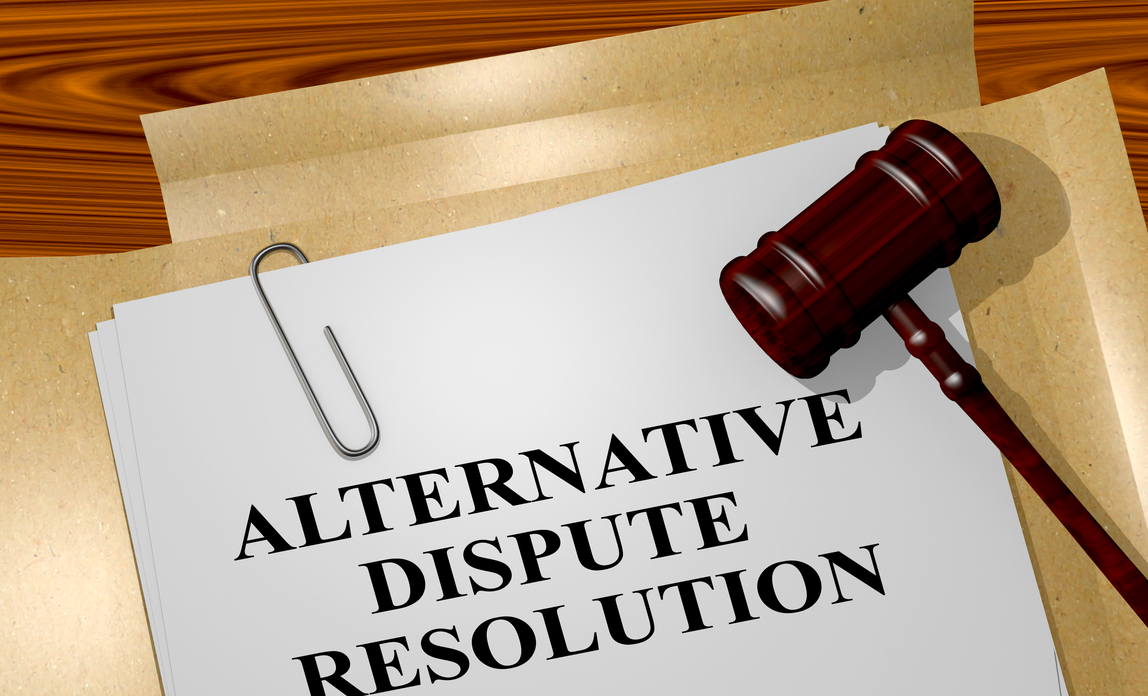
What is Aqueous Film Forming Foam (AFFF)?
Aqueous Film Forming Foam, commonly known as AFFF, is a firefighting suppressant used to extinguish fuel-based fires. Its unique formula allows it to spread across the surface of flammable liquids, creating a barrier that starves the fire of oxygen and prevents the release of flammable vapors.
The primary components of AFFF include fluorinated surfactants and foam stabilizers, which together produce a thin, water-based film. This film is highly effective at suppressing Class B fires, particularly those involving petroleum oils and gases. The effectiveness of AFFF in rapid fire suppression has made it a staple in various high-risk industries, such as aviation, military, and emergency response sectors.
Despite its firefighting prowess, AFFF has been the subject of environmental and health concerns due to the presence of per- and polyfluoroalkyl substances (PFAS), which are persistent in the environment and have been linked to adverse health effects. The following points outline the main concerns associated with AFFF:
- Persistence in the environment, leading to contamination of soil and water sources.
- Potential to bioaccumulate in wildlife and humans.
- Association with health issues such as cancer, immune system disorders, and hormonal disruptions.
Historical Use and Environmental Impact
Aqueous Film Forming Foam (AFFF) has been a critical tool for firefighting, particularly in combating oil and gasoline fires that water alone cannot extinguish. Developed in the 1960s by the U.S. Navy, AFFF’s effectiveness quickly made it the standard for military and civilian firefighting operations worldwide.
However, the widespread use of AFFF has led to significant environmental concerns. The foam contains per- and polyfluoroalkyl substances (PFAS), which are highly persistent in the environment and have been found to contaminate soil, water sources, and entire ecosystems. The following points highlight the environmental impact of AFFF:
- Persistence in the environment: PFAS compounds do not break down easily, leading to long-term contamination.
- Bioaccumulation: These substances accumulate in the bodies of animals and humans, with potential for upward movement through the food chain.
- Water contamination: AFFF runoff has led to PFAS presence in groundwater, drinking water, and surface waters, affecting communities and wildlife.
The historical reliance on AFFF has thus left a legacy of pollution, with cleanup efforts proving to be complex and costly. The environmental impact of AFFF continues to be a contentious issue, as affected communities seek remediation and policymakers grapple with the challenges of regulating these persistent chemicals.
Health Risks Associated with AFFF Exposure
Exposure to Aqueous Film Forming Foam (AFFF) has been linked to a range of serious health risks, primarily due to the presence of per- and polyfluoroalkyl substances (PFAS). These chemicals, which are key ingredients in AFFF, are known for their persistence in the environment and their ability to accumulate in the human body over time.
The health risks associated with AFFF exposure include, but are not limited to:
- Development of certain cancers, such as kidney and testicular cancer
- Immune system disorders
- Hormonal disruptions and reproductive issues
- Elevated cholesterol levels
Individuals who have experienced prolonged contact with AFFF, especially firefighters and military personnel, are at a heightened risk of developing these health conditions. The link between AFFF and these adverse health effects has led to a surge in litigation, as affected parties seek compensation for their illnesses. The legal focus on firefighting foam, its dangers, and the potential lawsuits related to PFAS exposure and cancer risks is a critical aspect of the ongoing discourse surrounding AFFF.
Legal Landscape of AFFF Litigation
Key Lawsuits and Their Outcomes
The legal battles surrounding Aqueous Film Forming Foam (AFFF) have been pivotal in shaping public awareness and regulatory responses to the foam’s environmental and health impacts. Notably, several key lawsuits have set precedents and influenced the direction of future litigation.
- 3M Company Lawsuit: In one of the most significant cases, the 3M Company faced allegations of knowingly manufacturing and selling AFFF containing harmful perfluorinated chemicals. The outcome was a settlement in which 3M agreed to pay millions to affected parties, acknowledging the need for accountability without admitting liability.
- DuPont and Chemours Settlement: DuPont and its spinoff company, Chemours, settled a series of lawsuits for over $670 million after claims that they discharged perfluorooctanoic acid (PFOA), a key ingredient in AFFF, into water supplies.
- Military Base Litigations: Numerous lawsuits have been filed by communities around military bases, where AFFF was extensively used for firefighting training. These cases often result in settlements to fund medical monitoring and environmental cleanup efforts.
These cases, among others, have not only resulted in financial compensation for affected individuals and communities but have also prompted stricter regulations and heightened scrutiny of AFFF use and disposal practices.
Federal and State Regulations Impacting AFFF Cases
The regulatory framework governing AFFF litigation is a complex tapestry of federal and state laws. At the federal level, the Environmental Protection Agency (EPA) has issued advisories and guidelines concerning the use and disposal of AFFF, which contain per- and polyfluoroalkyl substances (PFAS). These advisories, while not legally binding, have influenced litigation by establishing recognized standards for safety and environmental impact.
State regulations vary widely, with some states enacting more stringent laws regarding the use, management, and cleanup of AFFF. For instance, certain states have:
- Set specific limits on PFAS concentrations in drinking water.
- Required manufacturers to disclose the use of PFAS in their products.
- Established environmental cleanup funds to address contamination.
These state-specific regulations often serve as a basis for individual and class action lawsuits, as they can establish a duty of care that may have been breached. Understanding the interplay between these layers of regulation is crucial for any party engaged in AFFF litigation.
The Role of Science and Expert Testimony in Court
In AFFF litigation, the intricacies of scientific evidence and expert testimony can be pivotal. Courts often rely on specialized knowledge to understand the complex chemical properties of AFFF and its potential health effects. Expert witnesses in these cases typically include toxicologists, chemists, and environmental scientists who elucidate the link between AFFF exposure and adverse health outcomes.
Key points presented by experts often encompass:
- The composition and persistence of per- and polyfluoroalkyl substances (PFAS) in AFFF.
- The mechanisms by which these chemicals can harm human health.
- Epidemiological data and studies supporting claims of increased cancer risk among exposed individuals.
The weight of expert testimony can significantly influence the court’s decision, particularly in classifying AFFF as a hazardous substance and in establishing causation between exposure and illness. As such, the selection of credible experts and the presentation of clear, convincing scientific evidence are critical components of a successful AFFF lawsuit.
Navigating the AFFF Lawsuit Process
Steps to Take if You’ve Been Affected
If you believe you have been affected by AFFF exposure, it is crucial to take immediate action to protect your rights and health. The first step is to seek medical attention to document any health issues that may be related to AFFF. This documentation will be vital for your legal case.
Next, gather any evidence of AFFF exposure, such as employment records, military service documents, or proof of residence in contaminated areas. This evidence can help establish a connection between your health problems and AFFF exposure.
Once you have medical documentation and evidence of exposure, consult with a legal professional who specializes in environmental litigation. Firms like Dolman Law Group, known for their expert legal representation, can guide you through the complexities of AFFF litigation. They focus on litigation and trial work, which is essential for seeking maximum compensation.
Finally, stay informed about the ongoing AFFF litigation landscape. Understanding the legal precedents and regulations can help you make informed decisions throughout the lawsuit process.
Finding the Right Legal Representation
Securing adept legal representation is a pivotal step in the AFFF litigation process. Individuals seeking justice for AFFF-related harm should prioritize finding attorneys with a proven track record in environmental law and class action lawsuits.
Key considerations when selecting legal counsel include:
- Experience: Look for lawyers who have successfully handled AFFF or similar toxic exposure cases.
- Expertise: Ensure the legal team is well-versed in the scientific and medical aspects of AFFF.
- Resources: Choose a firm with the necessary resources to take on large corporations or government entities.
- Client Focus: Consider a firm that prioritizes client communication and personalized legal strategies.
It is also advisable to review past client testimonials and to schedule consultations with potential attorneys to discuss the specifics of your case. This initial interaction can provide insight into the firm’s approach and the compatibility between the attorney and client. Remember, the right legal team not only increases the chances of a favorable outcome but also provides support and guidance through the complexities of the legal system.
Understanding the Timeline of an AFFF Lawsuit
The journey through an AFFF lawsuit can be complex and time-consuming, often involving several distinct stages. Initially, potential plaintiffs must be aware of the statute of limitations, which dictates the time frame within which a lawsuit must be filed. Missing this deadline can bar the claim entirely.
Once a complaint is filed, the discovery phase begins, where both parties gather evidence and build their cases. This period can last several months to years, depending on the case’s complexity. Following discovery, if the case does not settle, it will proceed to trial. Trials can last from a few days to several weeks, and the time until a verdict is reached varies.
If a judgment is awarded, the defendant may choose to appeal, further extending the timeline. Throughout this process, legal representation is crucial, as they navigate the intricacies of the legal system and advocate for the plaintiff’s rights. It’s important to note that while some cases resolve quickly through settlements, others may take years to reach a conclusion.
Compensation and Remedies in AFFF Cases
Types of Damages Awarded
In AFFF litigation, plaintiffs may be entitled to various forms of compensation, reflecting the multifaceted harm caused by exposure to these chemicals. The damages awarded typically fall into several categories:
- Compensatory Damages: These are intended to cover the actual costs incurred by the plaintiffs, such as medical expenses, lost wages, and other financial losses directly related to the AFFF exposure.
- Punitive Damages: In cases where the defendant’s conduct is found to be particularly egregious, punitive damages may be awarded as a means to punish the wrongdoer and deter similar future conduct.
- Non-Economic Damages: These address the more intangible consequences of AFFF exposure, including pain and suffering, emotional distress, and loss of enjoyment of life.
Each case is unique, and the specific damages awarded will depend on the circumstances surrounding the exposure, the severity of the harm suffered, and the applicable state laws. It is crucial for plaintiffs to work with experienced legal counsel to accurately assess and argue for the full range of damages to which they may be entitled.
Case Studies: Successful AFFF Claims
Several landmark cases have set precedents in AFFF litigation, providing hope and guidance for those affected by AFFF contamination. One notable case concluded in 2017, where a major chemical manufacturer agreed to an $850 million settlement with the state of Minnesota. This settlement addressed the contamination of drinking water with perfluorinated chemicals (PFCs) from AFFF.
Another significant victory occurred in 2018, when firefighters in a class-action lawsuit received a $43.5 million settlement from manufacturers of AFFF. The lawsuit alleged that the manufacturers knew of the dangers associated with the foam but failed to warn users.
These cases, among others, illustrate the potential for successful legal recourse for individuals and communities impacted by AFFF. They underscore the importance of holding manufacturers accountable and the effectiveness of the legal system in providing relief and compensation for damages.
The Future of Settlements and Trust Funds
As AFFF litigation continues to evolve, the future of settlements and trust funds appears to be shifting towards more comprehensive and victim-centric approaches. The establishment of trust funds is becoming a favored mechanism for ensuring that victims receive compensation even as defendant companies face bankruptcy or restructuring.
- Centralized Trust Funds: These funds are designed to pool resources and streamline the compensation process for claimants, providing a more efficient and equitable distribution of funds.
- Medical Monitoring: Future settlements may include provisions for long-term medical monitoring, reflecting the growing recognition of the prolonged health risks associated with AFFF exposure.
- Environmental Remediation: There is also an increasing emphasis on including environmental remediation costs in settlements, aiming to address the long-term ecological damage caused by AFFF contaminants.
The landscape of AFFF settlements is likely to be influenced by ongoing scientific research, public awareness, and legislative changes. As new information emerges about the health and environmental impacts of AFFF, settlements and trust funds will need to adapt to ensure that they adequately address the full scope of harm caused by these substances.
Preventive Measures and Future Outlook
Alternatives to AFFF and Safer Practices
In the wake of the controversies surrounding Aqueous Film Forming Foam (AFFF), significant efforts have been made to develop and implement safer alternatives. These alternatives aim to provide effective fire suppression without the environmental and health risks associated with traditional AFFF.
- Fluorine-Free Foams (F3): These are formulations that exclude per- and polyfluoroalkyl substances (PFAS), which are the primary toxic components in AFFF. F3 foams are gaining popularity for their reduced environmental footprint.
- Water Mist Systems: Utilizing fine water sprays, these systems can control and extinguish fires by cooling the flames and displacing oxygen. They are particularly useful in enclosed spaces and are less harmful to the environment.
- Gel-Based Suppressants: These agents can suffocate fires by creating a barrier that starves the fire of oxygen. They are also biodegradable and have shown promise in both structural and wildland firefighting scenarios.
Adopting safer practices involves not only choosing alternative firefighting agents but also improving training and response protocols to minimize the use of hazardous substances. Regular reviews of fire suppression systems and practices ensure that the most current and least harmful methods are in place. As the industry moves forward, the emphasis on sustainability and safety continues to shape the development of fire suppression technologies.
Legislation and Policy Changes on the Horizon
As awareness of the dangers associated with Aqueous Film Forming Foam (AFFF) grows, legislators at both federal and state levels are mobilizing to enact policies that will mitigate future risks and address past harms. Upcoming legislation is expected to focus on several key areas:
- Stricter Regulations: Proposals for tighter controls on the manufacture, use, and disposal of AFFF are in the works, aiming to prevent further environmental contamination and exposure to toxic substances.
- Funding for Research: Bills that allocate resources for studying the long-term effects of AFFF on health and the environment, as well as the development of safer alternatives, are gaining traction.
- Victim Compensation: New policies may establish funds or other mechanisms to provide financial relief to those affected by AFFF, ensuring that victims receive the support they need for medical and other expenses.
The landscape of AFFF-related legislation is rapidly evolving, with bipartisan support for measures that protect public health and the environment. Stakeholders, including affected communities, environmental advocates, and industry representatives, are actively participating in the dialogue to shape these policies. The outcome of these efforts will likely have a significant impact on the future use of firefighting foams and the legal recourse available to those harmed by their use.
Community and Environmental Rehabilitation Efforts
In the wake of AFFF-related environmental damage, communities and governing bodies have initiated rehabilitation efforts to restore ecosystems and protect public health. These efforts often involve a multi-faceted approach, including the removal of contaminated soil and water, the implementation of stricter waste management protocols, and the introduction of educational programs to raise awareness about the dangers of AFFF pollutants.
Key initiatives include:
- Remediation projects: These are designed to clean up and restore contaminated sites, often requiring long-term monitoring to ensure the effectiveness of the remediation.
- Sustainable practices: Encouraging the adoption of alternative firefighting foams that are less harmful to the environment.
- Community engagement: Local groups and non-profits may work alongside affected residents to advocate for stronger environmental protections and to seek justice for those impacted by AFFF contamination.
The path to recovery is a collaborative effort that hinges on the support and involvement of all stakeholders. Legal firms, such as The Levin Firm, play a pivotal role by offering personal injury legal services and ensuring that affected parties are fully compensated. Their expertise and successful track record in environmental litigation can be a valuable asset to communities seeking to navigate the complexities of AFFF lawsuits.








